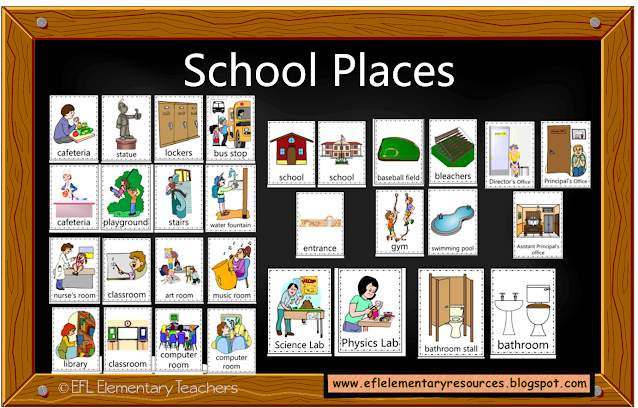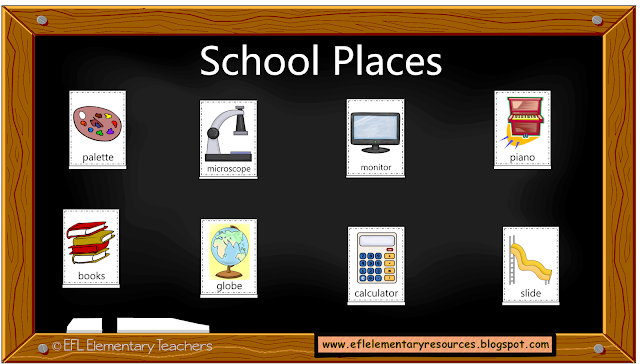The School Subjects product keeps getting bigger! (405 pages)
Watch the video with the complete resource:
Place
all the school places flashcards on the board to introduce to the class. Have
them say which ones are in their school.
Teacher: Cafeteria!
Students: YES!
Teacher: Gym!
Students: NO!
Hand
in the School places flashcards to several students and have them come to the
front.
Teacher: Where are you?
Students: I am in the music room.
Teacher: Where are you?
Students: I am in the Science Lab.
Play a game. Hand in the school places flashcards to all the
students in the class. They can’t show it to anybody.
Teacher: Maria, are you in the library ?
Maria: No, I am not. I am at the playground.
(shows it to the class).
Then, it’s Maria’s turn to
ask another student the question. The game keeps going until all then cards are
shown to the class
Have
the students identify the school subjects and where
they take place in their school.
Teacher: Where do you have Art?
Students: in the art room!
Teacher: Where do you have I.T?
Students: in the computer room!
Have the students make more
sentences.
Talk
about where the places
are using prepositions and the flashcards.
Teacher: Where is the Library?
Students: It is next to the water fountain.
Teacher: Where is the water fountain?
Students: It is between the library and the
playground.
Have
the students write similar sentences of their school setting.
Place
this set of flashcards on the board and ask students questions.
Teacher: Where is she?
Students: She is in the Library.
Teacher: Where are they?
Students: They are in the cafeteria.
Have
the students write these sentences on their notebooks.
I
also made another game board for this
specific grammar point.
Each
player gets a student card as a marker. I placed a clip behind each one to make
them stand. The first students throws the die and He/She has to answer: Where
are you ?
Teacher: Where are you?
Students: I am in the computer room.
Now
ask students where they are and at what time.
Teacher: Where are they at twenty to nine?
Students: They are in the computer room.
Teacher: Where is he at eleven o’clock?
Students: He is in the Science Lab.
Place
the noun flashcards on the board
and ask students questions.
Teacher: Where is the palette?
Students: It is in the Art room.
Place
the art room flashcard on or next to the palette. Continue with the rest of the
nouns.
The
school theme is not over! There is more. Follow me!!















































